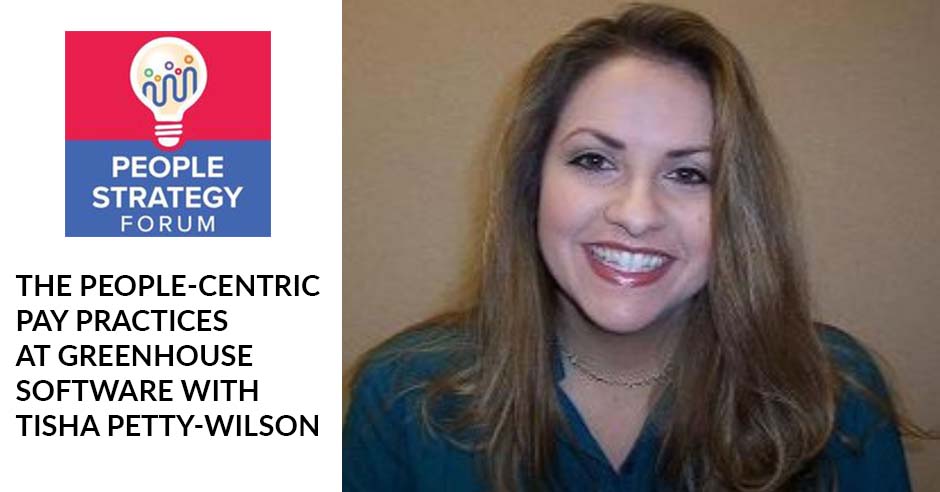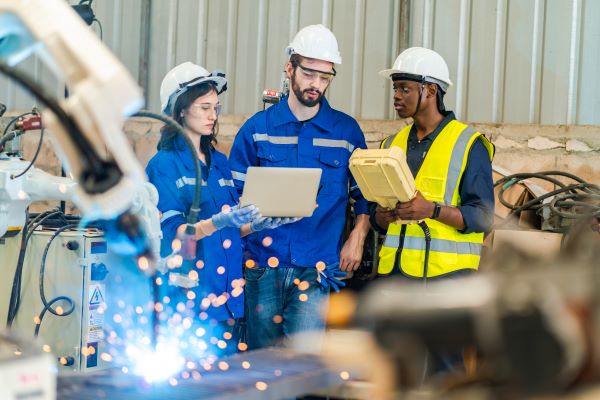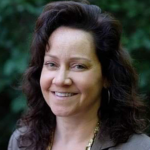The People-Centric Pay Practices At Greenhouse Software With Tisha Petty-Wilson

People-centric is a term that has been thrown around a lot recently, but what does it actually boil down to? Among other factors, pay has to be considered. After all, it remains to be one of the biggest motivators for employees, no matter what thought leaders might say. In this episode, we get to see what people-centric pay practices really look like in real life. Tisha Petty-Wilson shares some of their exemplary policies and programs at Greenhouse Software, including their national pay policy and their partiality towards remote work. Join in and learn how to truly make your talent feel truly compensated for their hard work!
—
The People-Centric Pay Practices At Greenhouse Software With Tisha Petty-Wilson
Welcome to the People’s Strategy Forum. We’re a show that guides leaders on how to elevate the overall workforce. We believe that people are at the heart of successful organizations. Team members‘ well-being, rewards, and career development are all essential to a happy, healthy, and highly productive workforce. This show discusses practical and effective leadership strategies for top executives, senior professionals, and talent managers. I’d like to introduce you all to our panel of hosts.
First is a Sumit Singla. He is a seasoned Compensation Advisor and Strategic HR Consultant with over 30 years of experience. He helps guide companies on an international basis given his deep expertise and how the globe works. Welcome, Sumit. We also have Char Miller, a Human Resource Consultant, business owner, and Chief HR Officer. She runs several businesses and so I call her a serial entrepreneur. She loves to create things and help people. We’re very fortunate to have her on show. Of course, our our esteemed guests. We have Tisha Petty-Wilson.
Tisha Petty-Wilson brings a wealth of experience and she is the Director of People Rewards at Greenhouse. At Greenhouse, she’s not only crafting policies, but she’s creating an environment where employees flourish. Her work is a testament to the belief that the right rewards can not only attract top talent but also nurture and culture growth in innovation.
With a blend of strategic insight and practical wisdom, Tisha is here to share her rewards knowledge on how to bring the overall workforce together. For all you leaders listening in, let’s get ready to dive into the insights that can be a game-changer for your organization as Tisha has had a significant impact on her own. Welcome, Tisha.
Thank you.
A People Company
Tisha, to kick things off, I’d love to hear a little bit about your background and how you got into HR and started helping people in Compensation Rewards.
I’ve always been in the Human Resources people side of the business my whole career. I started in the benefits segment. I’ve worked in various areas of compensation, equity, and executive benefits. I’m always focused on trying to help people and help organizations achieve their goals through the different benefits that we provide, whether it is compensation or equity all different areas of the people’s side of rewards. I was previously in the logistics and transportation industry. I transferred over to the technology sector with an opportunity to work from home and flourish. I loved the opportunity and it then brought me to Greenhouse where I love the people love the culture. That’s where I am today.
That’s quite a shift. That’s one thing I noticed you mentioned as far as being able to work remotely and so forth. That’s something that a lot of professionals are grabbing onto in the past few years and trying to keep a firm grip on that because a lot of companies are trying to take that away. How was your transition to remote work? Did you have struggles when you first started with that?
COVID was what introduced me to that opportunity. At first, I think it was very different from most folks where you’re used to going into the office. You’re used to seeing people face to face and having what they call the water cooler chats and that kind of thing. It’s trying to navigate and understand how you can still have that but working remotely.
It was a learning curve to understand how you can still have those conversations. How do you still connect with people? When I first started my first fully remote position, I didn’t expect to have the same deep connections that I had in person for so many years. That’s not true. It was not the case at all. I thoroughly enjoyed my first opportunity to be able to work remotely and was able to form great friendships that are still long-lasting ever since.
It takes a different type of effort but it’s completely possible. Some folks like me in particular love being fully remote. I love working from home. It suits my lifestyle and my family. It provides us with more time together, less commuting time, and all the things that are so important for me and my family. It works perfectly.
What are the key things that attracted you to Greenhouse Software? I know it’s a prestigious company, but what were the key things that drove you to work there?
100%, it was the culture. I was working for another tech company, JAMF at the time. It was a funny story. We were a customer of Greenhouse and we had some positions open on my team. A recruiter from Greenhouse reached out and I thought she was asking about the positions I had open at JAMF. I came to find out she was talking about a position at Greenhouse. It’s a funny story of how I even ended up there.
When I learned about their culture, I was sold. They took DE&I to a whole new level. They even rebranded it, so here at Greenhouse, we call it IDEA. It’s Inclusion, Diversity, Equity, and Allyship. We want to be sure and include our allies. When I was speaking with the recruiter about the culture here at Greenhouse, and how the idea is woven into every decision that’s made, ELT at the very top level down, I was sold.
It was so important to me and my family. My wife and I have two children and we value the inclusion that we feel. We are able to bring our true selves and our whole selves to work and it’s reflected in the Arbors which are our employee resource groups here at Greenhouse. That was the selling factor for me on top of the fact that it was a phenomenal organization.

People Centric Pay: We absolutely just value the inclusion that we feel and we are able to bring our true selves our whole selves to work.
Can you dive in and tell us a little bit about how that is executed on a daily basis? How do the employee resource groups get together and drive change throughout the organization and its customers?
It’s so fascinating to watch because they truly have a voice within the organization. Whenever our top leadership is talking about the strategy for the organization and making policy decisions and we’re trying to implement different processes and procedures throughout the people team, we’re a people company. We want to put our people first. In doing so, our IDEA Arbors lead those conversations and they have a voice. They give us input into any type of decision that we’re making. Whether it’s for our side of the house and it’s compensation or equity and all the different people policies that we have, they truly help us to drive a people-first culture within our organization. To me, they’re essential to our culture.
We're a people company and we want to put our people first. Share on XIt’s so important to have these resources and then leaders listen and take action upon the input that they provide. That’s great to hear that Greenhouse is a leader in that area. What are other ways that Greenhouse consistently upholds their values in their culture? How does it keep it going in this remote environment?
In various ways, we want to try to make sure that we have the Idea woven into all of our policies and practices. For our side of the house, in particular, we went through a massive compensation shift in 2023 using the Comp team. We went through a very strategic shift in our practices. We went from geo-based paid practices and policy to a national-based strategy.
The ability to be able to do that level of change in the organization took all hands on deck. We had to have our leadership from the very beginning and we had to be careful about all the decisions we were making to keep our people first. To make sure that it was the right direction to go. From the people team, that had a huge impact on the organization from leadership down. Being careful about how we go about making those decisions as well as our implementation.
Navigating Change
Often, change comes with a lot of resistance in times. You mentioned that you had to handle change management very carefully and so forth. Did you have some bumps in the road? What did that look like?
Absolutely. As you can imagine, even with a company of our size, we are very nimble and able to shift and process change very quickly in comparison to some organizations. Even with our company, it was a large change and it was a shift in historical practices, we took the approach of trying to make sure we put change management at the forefront. Whether it was implementing and creating the training materials or communication materials. We created a group of special change champions that were vital to the impact on the organization.
They were necessary to make sure that we were creating materials that were answering all the questions. We were creating training that was digestible by the organization and would help guide them through the learning curve. Much of it was helping educate the organization around the change to this national pace strategy and understanding the impacts and how this can improve and help us to be scalable in the future.
The most important part was getting that change management process correct. We included our executives right from the beginning. That was vital. We had to have top-down support to make sure that we were aligned moving forward through that process, and then they were instrumental in making sure that the next level of leadership was also included in those decisions and that process, and then truly developed the communication and training materials but in doing so, making sure that we were including all the key stakeholders in helping us to craft those and create.
Using the Comp team, you guys helped us. You were the drivers of that change in helping us to create a strategy that made sense, and that was scalable for our organization as we continue to grow. The most important part was making sure that it was the right decision for the organization. We were doing it for the right reasons. Also, we want to be able to continue to attract and retain our top talent. We had to make sure that our market data is current and up to date, and that we don’t have outdated or stale dated data in terms of our market data
Keeping up to date with the market is a real-time thing nowadays for sure. Sumit, I would love to dive in here a little bit because Tisha is talking about a lot of diversity, equity, inclusion, and so forth, and then managing change through the organization. In the past few years, what are the challenges that you’ve seen across the globe and navigating change carefully in this crazy world that we’re in right now?
That’s an interesting one Sam. One of the biggest obstacles to change that I see is trying to make it a one-size-fits-all prescription that this is changing now you as an employee figured out a way to deal with it. I think that’s completely wrong. Change has to factor in what the needs of the people are. In line with what Tisha was saying, we need to look at multiple aspects of what are the impacts of the change going to be on different people based on their locations, based on their roles, their career stages, or life stages as well.
One of the biggest obstacles to change is trying to make it a one-size-fits-all prescription. Share on XWhile in all fairness, we may not be able to offer unique solutions to 100% of the people, being thoughtful about how we are crafting change and getting support from the people themselves will surely help. This is where I often talk about the Map of Africa Challenge which is when the colonial powers divided up the continent of Africa.
They sat in a conference room in the mid-1800s and they drew straight lines across the map saying, “This territory is mine. That’s yours.” Until the date, you see a fair number of straight lines on the borders of some countries. It led to a lot of strife and led to a lot of conflicts. I think being on the ground and implementing change there would solve a lot of it.
National Pay Policy
Listening to people, as you mentioned Tisha, is a critical element in all of this. As you are moving to the national pay policy or as you’re considering that what were you hearing from the employees or your Greenies? What were they saying that drove toward that decision?
Some of the things were geo-based. We’re talking about recruiting for a software company. We want to listen to our employees and customers and think about what is our recruiting base and where people live. Being a fully remote company, they can live anywhere almost and so the cost of labor comes into play there because we need to think about having more fairness and consistency across the organization and allowing folks to live where they feel they do their best work.
To be able to do that, we fed into this idea around a national pay strategy. For us, that meant reviewing the market data around the national pay averages for the cost of labor in the various areas, but then we took it another step further and said, “Where do our Greenies live? What’s the Greenhouse national average?”
We then take it to the next step and grow that data up to around six months into the following year to make sure that we’re accounting for market changes that could potentially come our way in the future. Our fourth step is doing it all over again every six months to keep that data fresh. This process helped us to get the best possible outcome to create this national pay strategy, create the best outcome of fairness and equitable compensation decisions, and allow folks to live where they feel they do their best work.
This program allows them to have the luxury of moving anywhere they would like in the United States and some situations, visiting other parts of the globe and so forth without having a pay disruption or change. That brings us to a very interesting program that you have, the Global Passport Program. Can you tell us a little bit about that and how that benefits Greenies?
Our Global Passport Program is one of our programs that we are quite proud of. It allows folks to travel to various parts of the world and continue to work for up to 60 days. That’s something that some of our folks have been able to take advantage of. They may go visit family in another country and still be able to work for an extended period of time. We’ve had a little over 15% of the organization take part in that in our first year. This was aligned with that national pay strategy of helping people and being people first to be able to live or visit where they feel they work best.

People Centric Pay: Our Global Passport Program allows folks to travel to various parts of the world and still continue to work for up to 60 days.
I think that it is brilliant. It’s a factor in how people want to live today. They want to see flexibility. They want to spend time with loved ones, explore the world, and appreciate the beauty that’s out there. I’d love to see that Greenhouse is a leader in that direction.
We are proud of that for sure.
How has that impacted the morale of employees? Have you noticed a change?
I think people are starting to recognize some of the benefits of these shifts that we’re trying to make. For example, if you’re someone who had lived historically in a lower cost of labor area, you’re going to start to recognize and start to see the shift moving more towards the national pay strategy because we want to be able to have more fairness and equitable compensation decisions as we go forward.
Those folks have started to see started to recognize some of those changes as well as our programs like Global Passport. I love hearing the stories that come out of that program because people are saying things like, “I got to visit my family in this other country that I haven’t seen in five years.” Because they couldn’t take time off. It was very difficult to get that far away from home and still work. We’ve heard wonderful stories like that or just, “I’ve always wanted to go visit this place, this location, or this country.” They are enjoying being able to continue to work but still have a flexible schedule and work from different time zones. We’ve heard some encouraging stories out of these.
Char, I know that you’re quite the global nomad yourself. You’ve also had the experience of managing people remotely across different zones. You are an earlier adopter in that because you started doing that years ago. Was that right?
Absolutely. I had the pleasure of running my business remotely. I was thinking I do something called the Mountain and Sea strategy which is essentially how you run businesses by the mountains and the sea, depending on the day. You can build a talent management structure where you keep in touch and communicate with your employees and leaders and rely on the talent of your leadership to truly run your operations and be that place point.
Also, from an awareness standpoint as an HR executive, I did find it very fascinating living here in Mexico when I went to an HOA meeting and learned that they had also pay practice issues. Even here in our community where violations related to pay practices such as paying under minimum wage, the fact that people work 6 days a week and 12-hour days.
Anyway, it made me more appreciative of the fact that I could provide flexible schedules for remote employment and truly follow the pay practices, also with the Comp team’s advice and consultation which I appreciated. That has been fantastic. Do you feel Tisha that your movement with your organization has changed the morale and also made a more inclusive company culture? I’m curious, are you a small or mid-sized organization in general?
Collaborating In A Remote Environment
We’re a small organization. I think small to mid-size about 650 employees or so. We are a private organization.
With having a large number of people that are remote and so forth, one of the big challenges that companies often have is they find that some of their people that are remote get lonely or drive for a little bit more collaboration. How does Greenhouse combat this and ensure that people are cohesive and so forth being that you have 650 people that are out there being remote at one time?
We do so many different types of communications and get-togethers. Our biggest one is our kickoff that we do each year company-wide. We do that in January and our leaders are talking about our strategy for the coming year, all of the top priority projects, and our roadmap. Once a month, we also have company holdings where we get updates on different policies or whatever the hottest topics are that are going on in our industry.
We also have these things that we call AMAs or Ask Me Anything. That’s where our leaders come on and answer questions. Our people can submit their questions and then the leaders will get together and have an AMA and submit the answers for those different questions. We have many Slack channels around about any topic you can think of.
We also have what we call Twig and it’s this week in Greenhouse. It’s a Weekly Newsletter for our Internal Communications team that shares things such as company events, and Arbor events. There’s an inspiration section where employees can share things with each other. Our Arbors put on lots of great events all year round.
I want to mention this, your acronyms are fantastic. I love that they are people-centric acronyms. People could remember the Twigs and Arbors and all of those types of matters because we used to call it Coffee with the CEO. It’s like, “Great, I like to sit and have coffee with my CEO.” It wasn’t permeating the entire culture so everybody felt part of that dialogue and the fact that all of your leadership is supporting that momentum in your culture. That is fantastic.
Thank you. I do have to give a huge shout-out to our internal communications team. They do a phenomenal job.
I like to say that I love working with the materials. You look at everything that is out there on Greenhouse and it’s beautiful. It’s cohesive like we were learning here with what Char pointed out, Arbor and those different acronyms are all pointing toward us and driving in the same direction. It’s a wonderful group that you have there supporting Greenhouse.
Thank you.
One of the things is as you mentioned, there are a lot of communication channels that come to ensuring that Greenhouse is cohesive and so forth. There are a lot of other companies that are trying to pull people back into locations and so forth. It seems like Greenhouse has got a serious strategic advantage by maintaining its remote workforce policies. Is that intentional?
I believe so. We are a fully remote company as has been consistently stated by our leadership that we are fully remote. We will remain fully remote. That has always been their message. I think it does help us. I think it expands our pool of talent that we’re able to pull from and helps us to encourage our culture of ideas for inclusivity and making sure that we have the best. We’re able to attract the top talent that we have.
A fully-remote and inclusive company culture attracts top talent. Share on XIf we carry that forward into the future and what Greenhouse is looking forward to accomplishing in the next few years with these people-centric policies, what are you working towards?
For 2024 from the people team, the number one initiative is enhancing our performance evaluation process by adding more structure to it. We’re rolling out a training program for our managers and truly driving more consistency and fairness across the organization and helping the organization set good goals at the individual level. It’s definitely a theme around performance for 2024.
One thing is that our job of continually training and informing new managers on policies and bettering the processes was never done. Would you agree with that Sumit?
Absolutely. In fact, I was thinking of what we’re talking about in terms of building a great remote culture. I was reading a report from India where one of the largest tech companies in the country is issuing a last warning to employees to either come back to the office or face consequences if they don’t choose to return by the 31st of March.
The funny and sad thing is that they’re saying they are doing this to improve the work culture and also to prevent security threats. It’s essentially handling cyber security. I am curious to know what are your thoughts about that, Tisha. We’ve been talking about it, but how does one maintain data security or how does one cater to the compliance aspect while working with a pretty much 100% remote team?
We have an excellent tech department and group. You do have to have security measures in place and every part of that that you need in terms of password requirements and authentication. I am not on the tech side. I’m not going to pretend to get into too much detail there. From a people perspective, we want to make sure that our Greenies can keep their information safe and their equipment safe.
In terms of being able to keep our culture, we do an excellent job of maintaining our culture, proving our culture, helping folks to feel included, and still being able to work remotely. Working remotely is something that I never thought of before COVID hit, but now it’s one of the things that I wouldn’t give up voluntarily. I truly enjoy it that much.
One of the things that we were talking about as far as the Arbors was you’re listening to them. You’re getting information from the organization to further innovate HR. What are other things that you do on a regular basis to stay ahead of the curve in your industry?
It’s around listening to our customers and who are our customers. For us, on the people team, our customers are our employees. Our employee opinion survey, we call it “Your Voice.” We truly want to hear their voice. We want to hear what are their thoughts about all of our practices, policies, compensation, equity, and every other part of total rewards. Our consultants, of course, like the Comp team, want to hear, “What are you hearing in the market? What’s happening in our industry and our competitors?” Other voices in the industry as well, especially on the Comp side.
We have to listen to market data. We have to be careful and make sure we have relevant market data. Also for Greenhouse, we need to listen to our customers. We are a people organization. We need to be very aware and in tune with our customers and what are they doing for their people teams. What are the things that they’re looking for? How are they innovating their policies?
Psychological Safety In The Workplace
I have a follow-up question Tisha on Your Voice. Again, what a fantastic name. As a person who was in charge of eleven hospitals and of the Employee Opinion Surveys, in the healthcare system, we had a lot of pressure to have at least 90% participation. That was shoved down the throats of our leaders and our employees. Second of all, we had a lot of employees either lie on the survey or refuse to take it because they feared retribution. How is Greenhouse doing things differently to encourage participation and help employees feel psychologically safe to be able to be transparent and honest with the feedback relative to all the topics that you talk about?
It’s around the education of what’s the purpose of the survey. How does the survey work? Who has access to the results? Our people team side of the house works with that. Shout out to the team. They do an excellent job and helping Greenies to feel safe around the fact that they truly want to hear their voices. They want to know what are their thoughts about this.
It’s a lot about the education piece and making sure that they do feel safe because they have to understand how it works and who gets the results, but then also take action. I think surveys are great if you take action. If you just do a bunch of surveys but the employees don’t see any change, then people aren’t going to take the time because they’re not going to feel like it’s valued. Having that follow-up after surveys I think is vital to be able to say, “You know what? We asked you and you told us. We listened and here are the changes that are coming because of it.”

People Centric Pay: If you just do a bunch of surveys but the employees don’t see any change, people aren’t going to take the time because they’re not going to feel like its valued.
One thing that I think highlights what Greenhouse has done well is establishing trust across their organization. When you have a fully remote workforce, you have a large degree of trust in the people that they’re producing. They have the company’s best thoughts in mind. They’re being secure and acting appropriately. Greenhouse has truly brought that mindset to its people.
That probably encourages greater survey participation and input and greater conversation around the organization. That’s something that I’ve experienced in my time working with you and your team. It seems like everybody is very collaborative and everybody is so happy all the time. I think that’s what comes from that type of environment.
That is so true. I think it lends itself very well to our organization. I’ve seen some excellent collaboration truly from the top down. That project that we went through last year of shifting to a national pay strategy, if we didn’t have that level of collaboration and trust in the organization, I don’t think it would have been nearly as effective. We wouldn’t have seen the level of adoption that we’ve seen so far.
To our audience, what we’ve heard here is a testament to how Greenhouses has an unwavering commitment to creating a workforce experience that is spectacular. I appreciate you spending time with us, Tisha, and sharing your insights.
Thank you for having me. I appreciate it.
For anyone who would like to learn more about Greenhouse, where should they go to learn about Greenhouse? I know you have your website out there, but are there other resources that you would recommend?
Our website of course would be the first one. We are very active on LinkedIn. Most of our employees are on LinkedIn. You can learn things from there the various podcasts that we like to participate in. Check us out.
Thank you so much, Tisha. It was a pleasure speaking with you.
Thanks, Sam. I appreciate it.
Take care, everyone and we’ll see you next time on the People Strategy Forum.
Thank you very much, Tisha.
Important Links
- Tisha Petty-Wilson – LinkedIn
- Greenhouse – Company website
- LinkedIn – Company LinkedIn profile
About Tisha Petty-Wilson
 Tisha Petty-Wilson is a distinguished Compensation and Benefits Business Partner with a robust background in human resources. Holding a Master’s in Business Administration from Webster University and a Bachelor of Science in Business Administration with a focus on Human Resources from Arkansas State University, Tisha blends academic excellence with practical expertise. Her skill set encompasses Project Management, Teaching, Relationship Building, and Public Speaking, making her a well-rounded professional in the field. At Greenhouse, she applies her extensive experience to innovate and manage people rewards, ensuring that compensation and benefits align with the organization’s strategic goals and employee needs. Tisha’s dedication to fostering positive workplace dynamics and her ability to navigate complex human resources challenges make her a vital asset to her team and the broader organization.
Tisha Petty-Wilson is a distinguished Compensation and Benefits Business Partner with a robust background in human resources. Holding a Master’s in Business Administration from Webster University and a Bachelor of Science in Business Administration with a focus on Human Resources from Arkansas State University, Tisha blends academic excellence with practical expertise. Her skill set encompasses Project Management, Teaching, Relationship Building, and Public Speaking, making her a well-rounded professional in the field. At Greenhouse, she applies her extensive experience to innovate and manage people rewards, ensuring that compensation and benefits align with the organization’s strategic goals and employee needs. Tisha’s dedication to fostering positive workplace dynamics and her ability to navigate complex human resources challenges make her a vital asset to her team and the broader organization.



